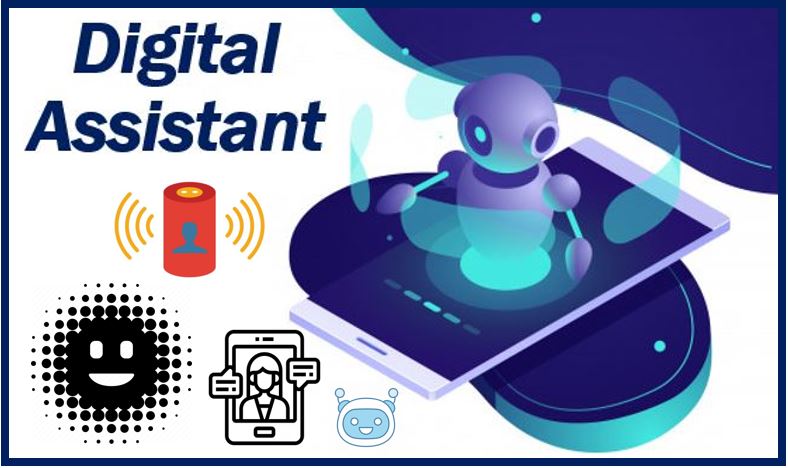Digital assistants are voice-activated software programs that can perform electronic tasks for you. We also refer to them as virtual assistants, predictive chatbots, mobile assistants, voice assistants, or virtual digital assistants.
If your smartphone, for example, has a digital assistant, you can tell it to do things for you, i.e., speak to it rather than type in instructions.
It’s a piece of voice-activated software that helps you with various tasks simply by using your voice. For example, you can ask it about the weather or even tell it to send a “Happy Birthday” text to another person.

Apart from carrying out spoken instructions, it can also utter answers to questions.
Since 2017, the capabilities of voice-activated computer programs have advanced considerably. Many digital assistants have artificial intelligence (AI) programmed into them. AI refers to software technologies that make smart devices think and behave like humans.
Digital assistants and chatbots
Although they are very similar to chatbots, we tend to use the two terms in different situations. Chatbots talk to people online in, for example, the customer support section of a website, while digital assistants exist in a user’s laptop, smartphone, tablet, or smartwatch.
Millions of people use their digital assistant
Millions of individuals across the world who own computers, tablets, or smartphones use a digital assistant. They also exist in cars, appliances, some smart TVs, instant messaging programs, and smartwatches.
Here are some well-known examples:
- Google Gemini.
- ChatGPT.
- Claude
- Siri on iOS devices.
- Bixby on Samsung phones.
- Amazon Echo on smart speakers.
Wake word
Users need to use a wake word when they want to interact with their digital assistant. A wake word, which may consist of one, two, or a group of words, activates the software, i.e., it brings it to life. In the popular TV series Star Trek, the wake word is “Computer.”
Common wake words people use today include “OK Google,” “Computer,” “Echo,” “Hey Cortana,” “Hey Siri,” and “Alexa.”
What can a digital assistant do?
Non-business environments
As these types of voice-activated software programs become popular, so do their capabilities. Their most popular functions today, in non-work situations, include:
- Reminding users of appointments and things they need to do.
- Setting alarms.
- Playing music, songs, or certain genres.
- Telling stories, and even jokes.
- Reading audiobooks out loud.
- Telling the user about current or future weather conditions locally or anywhere in the world.
- Answering general knowledge and other basic questions.
- Adding items to a shopping list.
- Providing directions (how to get somewhere).
- Sending specific people happy birthday texts on certain dates.
Business environments
According to Oracle, digital assistants serve as a convenient single point of contact for both contractors and customers, streamlining communications in customer contact centers. They also prove useful internally, such as helping to onboard new employees.
